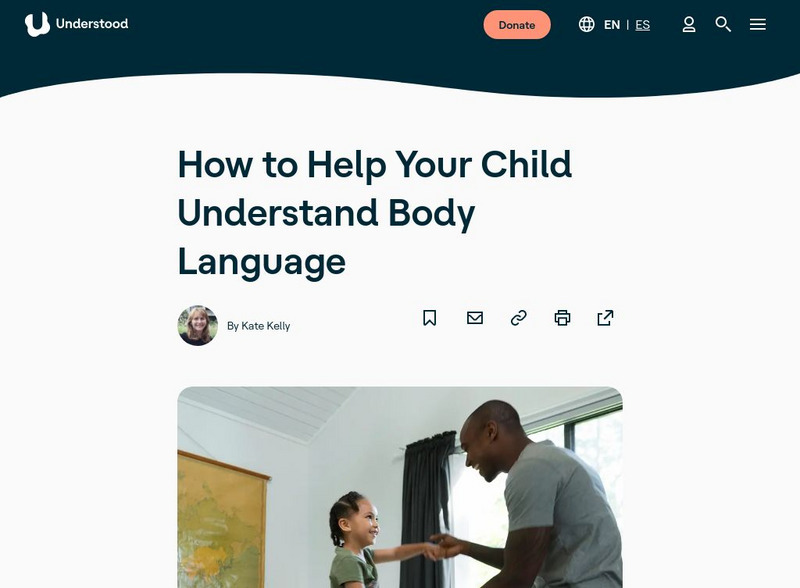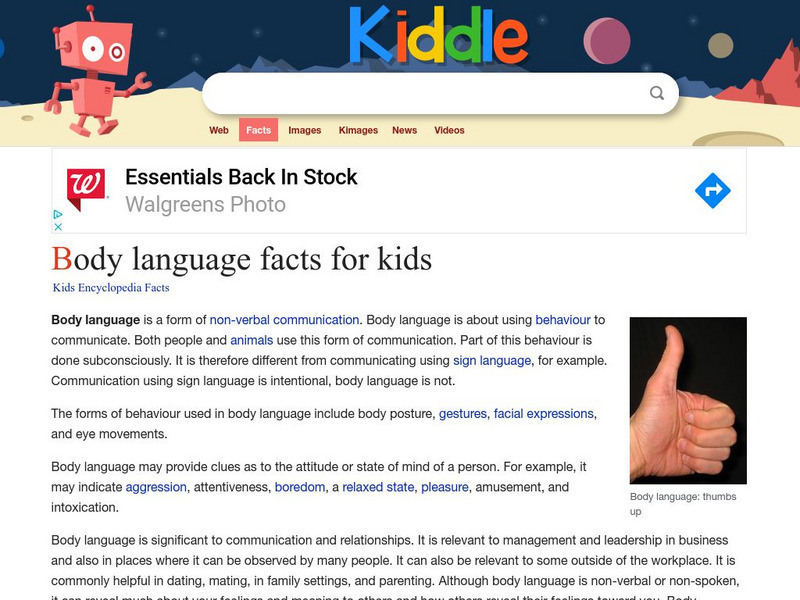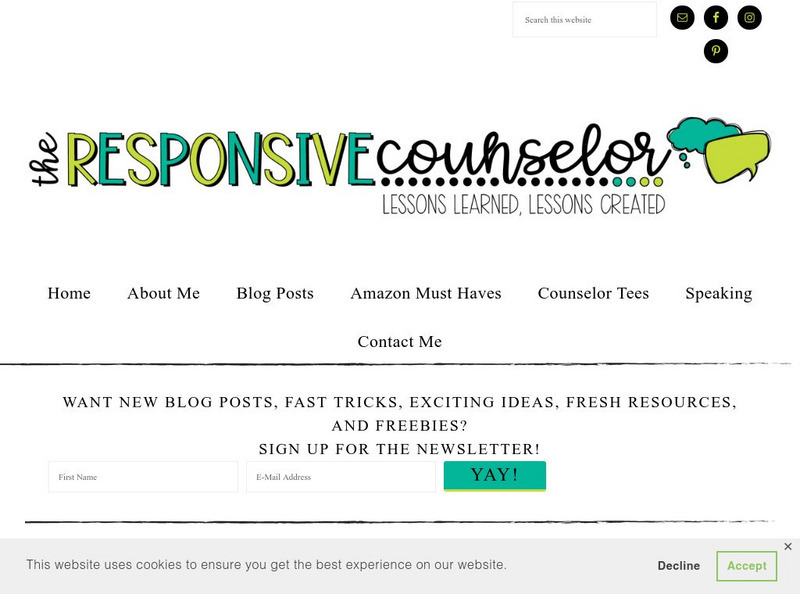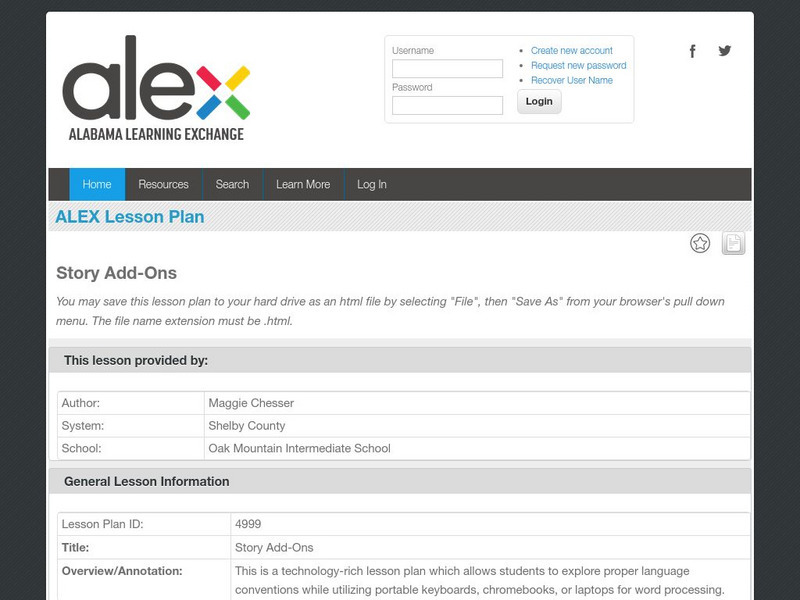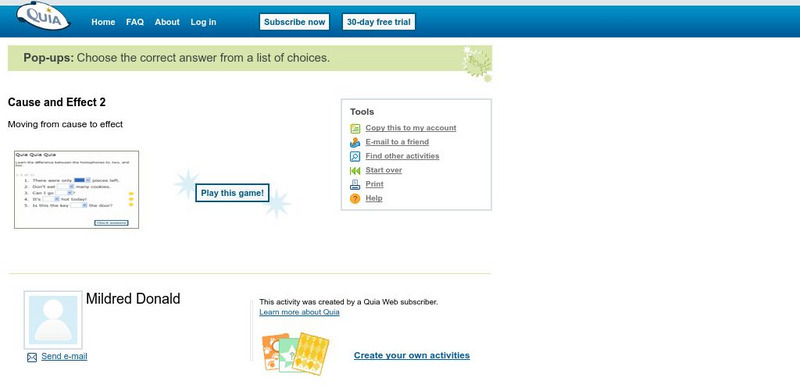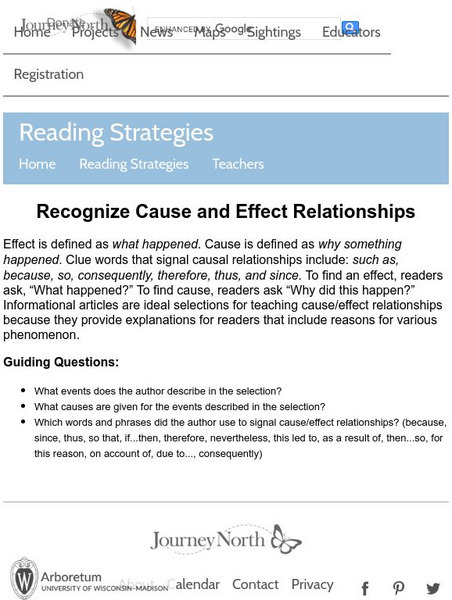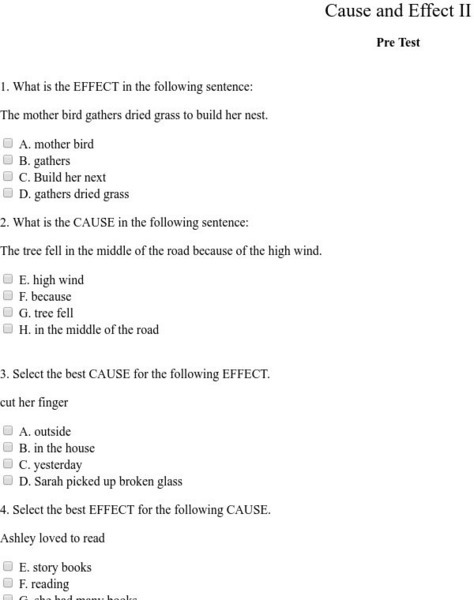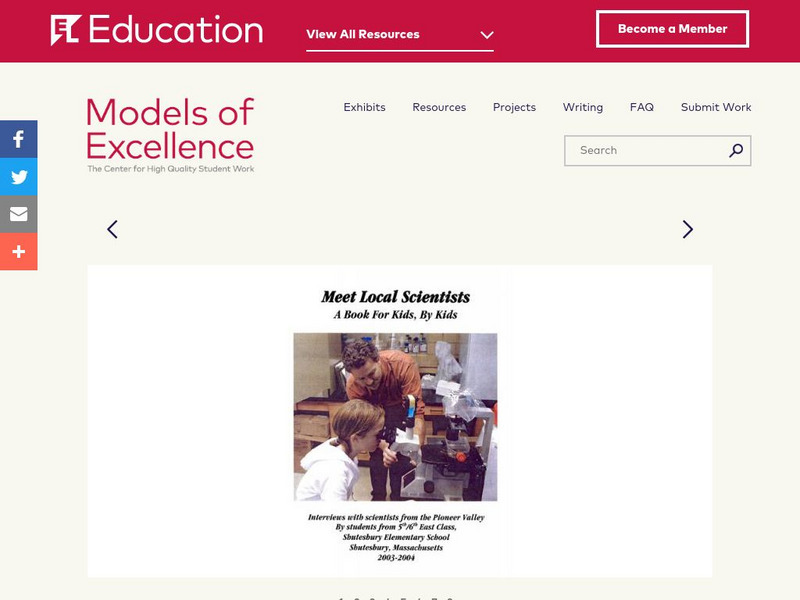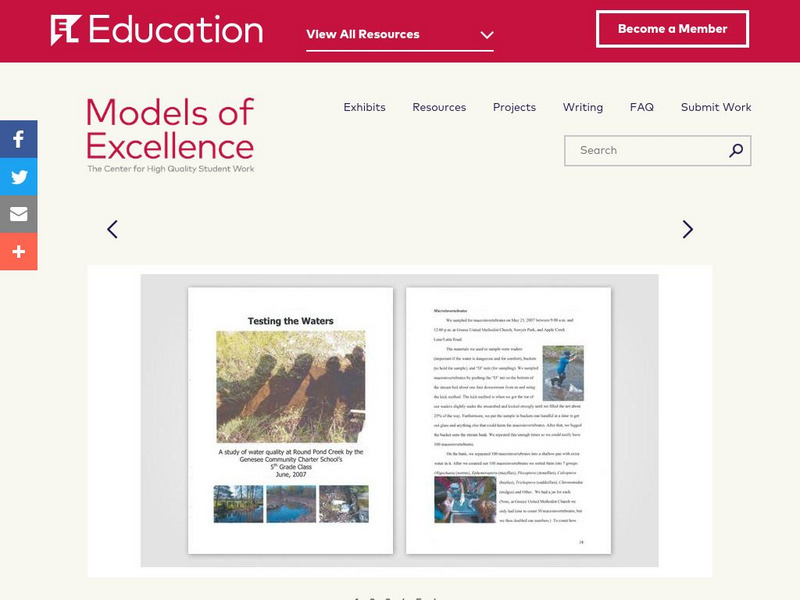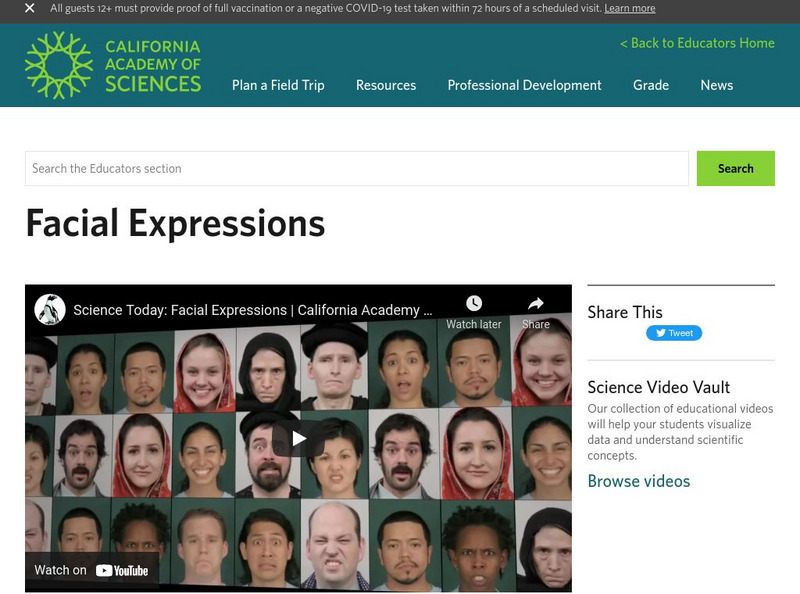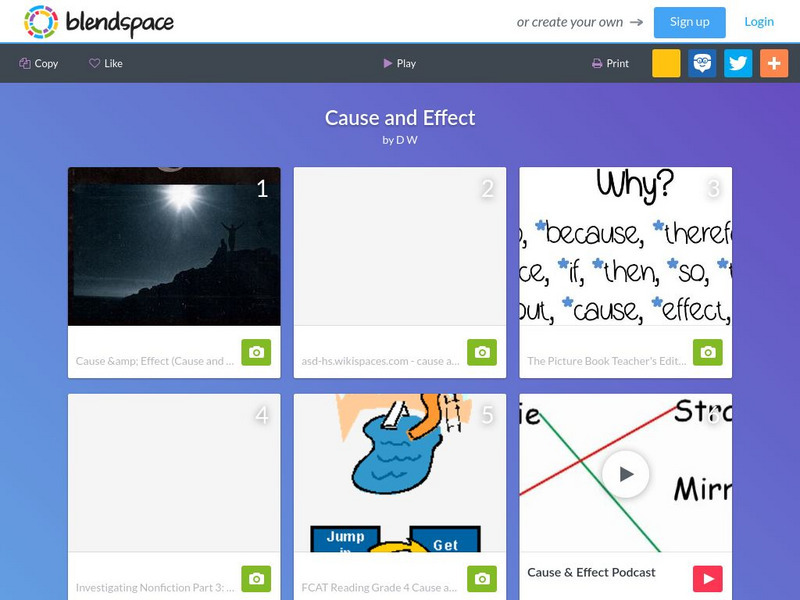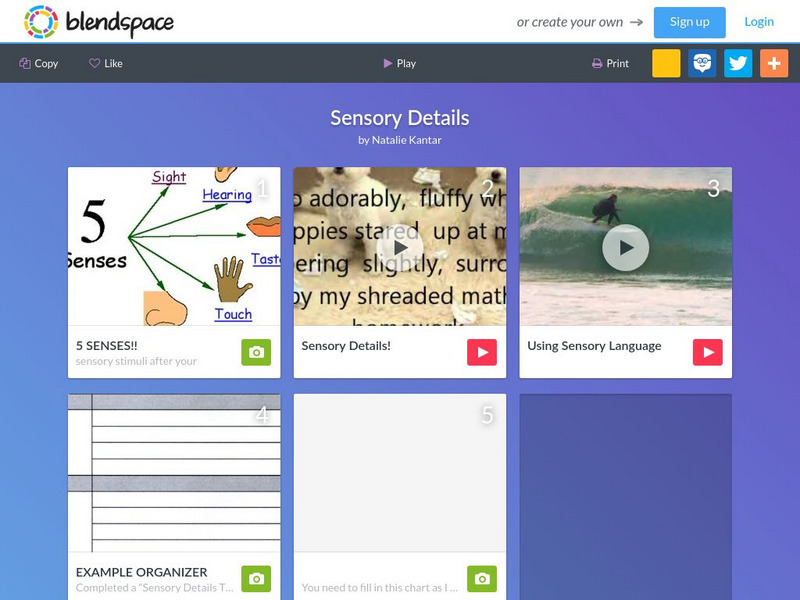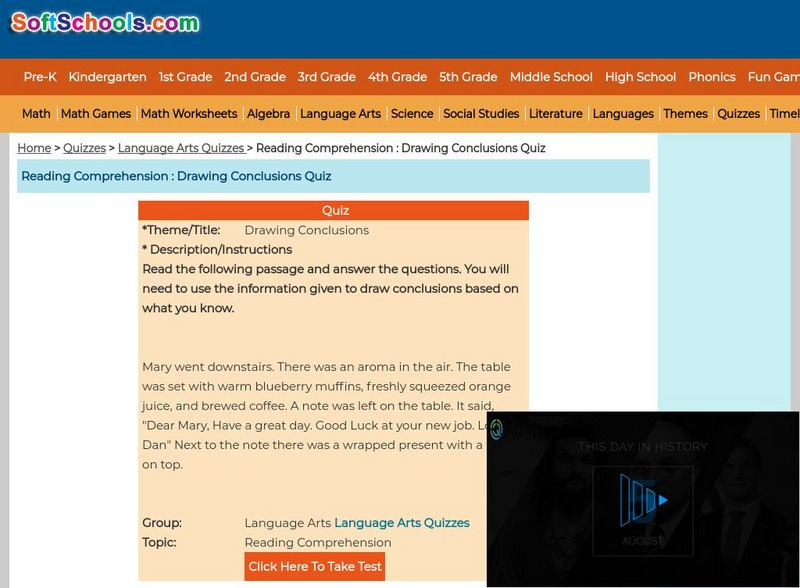Other
Take Lessons: How to Read Body Language: Examples From Around the World
This resource provides several examples of different meanings of various types of body language.
Understood For All
Understood: How to Help Your Child Understand Body Language
This article provides tips on how teach children to pick up on social cues.
Other
Kiddle Encyclopedia: Body Language Facts for Kids
This resource provide a list of common types of body language. Each type of body language is described.
Other
The Responsive Counselor: Body Language and Tone of Voice Lesson Plan
This blog post from shares several activities that will help students understand how to interpret voice tone and body language.
Alabama Learning Exchange
Alex: Story Add Ons
This is a technology-rich lesson plan which allows students to explore proper language conventions while utilizing portable keyboards for word processing.
Josie's Poems
Josie's Poems: "Expressing Ourselves"
A poem about how animals communicate and how humans are different because of the way we can communicate.
PBS
Pbs Learning Media: The Game
After watching this brief interchange over a chessboard, please write what you think the dialogue is for the two players.
Writing Fix
Writing Fix: A Left Brained Writer's Notebook: A Pentalogue: 5 Personal Beliefs
This lesson has students create an end-of-year reflective pentalogue (five personal beliefs). The list is to be about five different things each student has learned in the past year about what makes good, high-quality writing. A revised...
Other
Ccss Literacy E Handbook: Informational Text: Reasons and Evidence in Text
A short explanation of using reasons and evidence as supporting details. Click the link to see a model of how to identify reasons and evidence in an informational text. Click on the Model button on the bottom right to see a model.
Quia
Quia: Cause and Effect 2
Five sentences where students are asked to read the effect and then choose the appropriate cause. Answers can be checked after each question and a percentage grade is available at the end of the activity.
Annenberg Foundation
Annenberg Learner: Journey North: Reading Strategies: Recognize Cause and Effect Relationships
Learn how to identify the cause and effect relationships within a text by using a list of guiding questions.
Other
Shsu: Cause and Effect Ii
This is a 10 question, multiple choice pretest on recognizing cause and effect.
American Forum for Global Education
American Forum for Global Education: Talking With Our Hands
This lesson from the American Forum for Global Education is designed to help children understand that using hands to "convey messages" is a form of communication.
McREL International
Mid Continent Research for Education and Learning: Deconstructing Media Messages
This brief lesson focuses on the roles that many different people play in the creation of media messages and advertising.
Other
How to Study: Good Listening in Class
Eight tips on how to improve your listening skills in the classroom so that you gain more from lectures and discussions.
EL Education
El Education: Meet Local Scientists
Students learn about local scientists through research, interviews, and brief internships. Then students create pages for a class book containing digital photographs and information about the scientist and his/her field of study.
EL Education
El Education: Testing the Waters
Students tested water at several sites in a local creek and write a scientific paper showing their testing and results. Scientific papers include an abstract, introduction, methods, results, and discussion including recommendations...
California Academy of Sciences
California Academy of Sciences: Facial Expressions
Are facial expressions learned or innate? [2:58]
TES Global
Blendspace: Cause and Effect
A ten-part learning module on cause and effect relationships. Lessons include links images, graphic organizers, videos, and a worksheet.
TES Global
Blendspace: Sensory Details
A five-part learning module with links to images and videos about sensory details and using sensory language.
Soft Schools
Soft Schools: Drawing Conclusions
Read a literary text paragraph and then answer questions that require the reader to draw conclusions from the text in this nine-question quiz.
ClassFlow
Class Flow: Cause and Effect
[Free Registration/Login Required] This elementary flipchart explains cause and effect within the context of literature discussion. Activotes provide student interaction and assessment.
University of Colorado
University of Colorado: Dialogic Listening
Dialogic listening is similar to active listening but is an alternative. This site outlines its four major characteristics and provides related links.
EL Education
El Education: The Emancipator Selections From the Original
In this lesson, students combine research and fieldwork to learn about slavery through locally related events. Then they work to create a newspaper to demonstrate their understanding.



